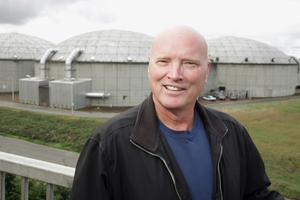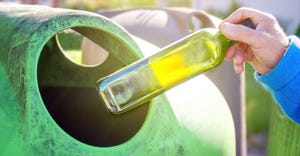SHARC System Converts Wastewater Into Energy
According to the U.S. Department of Energy, water heating is the second largest energy expense in U.S. homes. It typically accounts for about 18 percent of the average utility bill after heating and cooling. Additionally, all hot water that goes down the drain carries away energy with it or typically 80 to 90 percent of the energy used to heat water in a home. Utilizing a raw sewage filtration system, a Port Coquitlam, B.C.-based company is converting that wastewater into energy.
International Wastewater Systems (IWS) has developed, manufactured and installed what it is calling the SHARC system that can heat and cool buildings as well as provide hot water. The heat exchange technology conducts simple and direct heat exchange from untreated wastewater.

Lynn Mueller
“The IWS SHARC system is a pre-engineered turn-key solution for exchanging thermal energy with waste-water streams—a resource that offers a tremendous source of energy transfer for both space air conditioning and water heating applications,” says Lynn Mueller, president and CEO of IWS. “The proprietary filter technology screens solids contained within pumped waste-water streams so that the water stream is safe and efficient to use with custom high-efficiency plate-frame heat exchange technology, without risk of clogging the process-side of the heat exchanger. Fluid flows connected to the load-side of the heat exchanger accept or reject energy as needed and as available.”
Wastewater heat recovery is currently being commercialized throughout the U.S., Canada and the U.K. IWS recently completed several installations, which provide the buildings’ heating and cooling from either the municipal or the building’s sewage wastewater.
In a recent 172 unit condominium complex installation, the system provides hot water for all of the units at about 550 percent efficiency—saving the residents about 70 percent on their hot water heating bills. In addition, there is an estimated 100 metric tons per year emissions reduction. The company is presently designing systems that will be installed in the U.S. and Canada as well as the U.K.
“We have installed a SHARC system as an energy retrofit at the Camden Municipal Authority treatment facility in Camden, N.J.,” says Mueller.
Because hot wastewater is typically dumped down the drain untapped, a lot of energy has been used to heat this water. Tapping into that thermal energy helps cut down costs in large buildings.
“We are just re-using the thermal energy over and over again. This has a great effect on the energy efficiencies for a building, while reducing carbon emissions that come with alternative heating sources like natural gas or diesel,” says Mueller.
Cost savings and energy reduction are additional benefits of the system that will vary with each project depending on a number of factors including wastewater flows available, temperature of wastewater, heating and cooling load of a building, and the price of utilities.
The challenge of heat exchange technology is that people typically do not want to deal with raw sewage because of its nature.
“Our system is completely hermetically sealed—so no smell, and we are able to deliver a complete packaged solution so our customers get all the benefits hassle free,” says Mueller.
The earliest SHARC system was developed by IWS in 2011 and 2012.
“We now have nine active installations across Canada, the U.S. and the U.K. with several planned in the project pipeline, including our first in Australia,” says Mueller.
About the Author
You May Also Like


